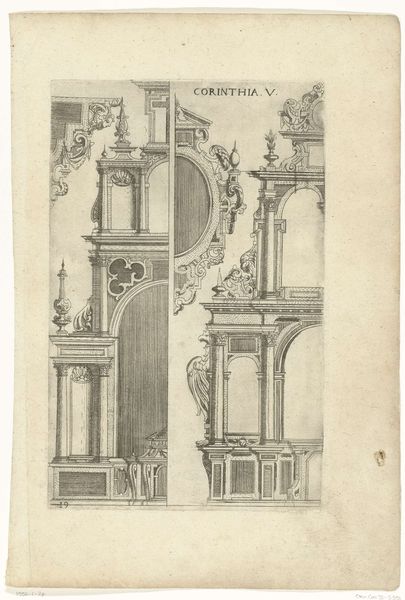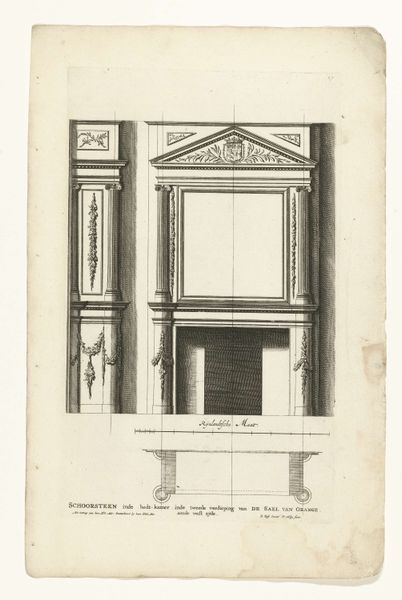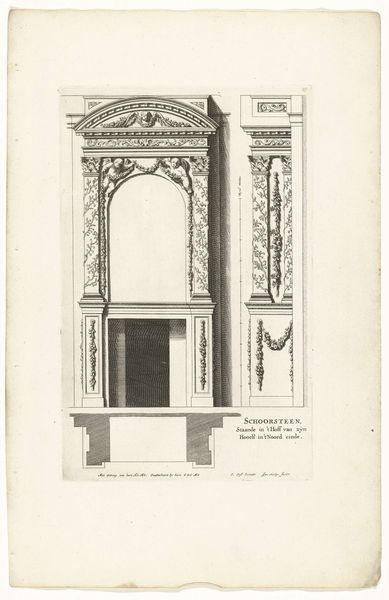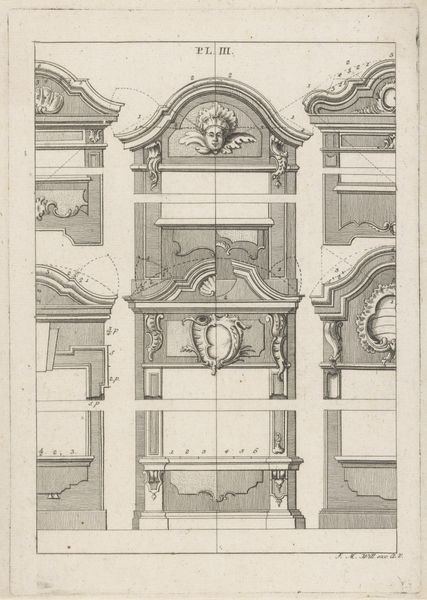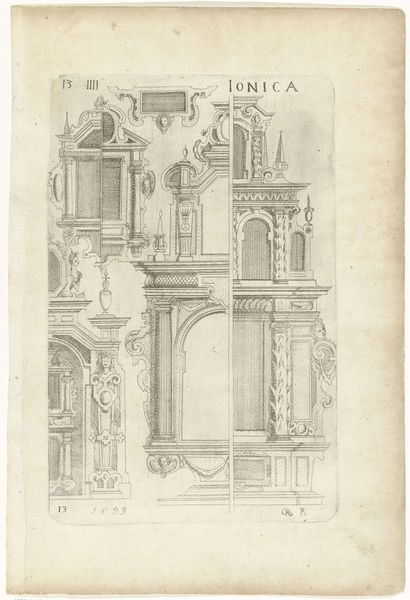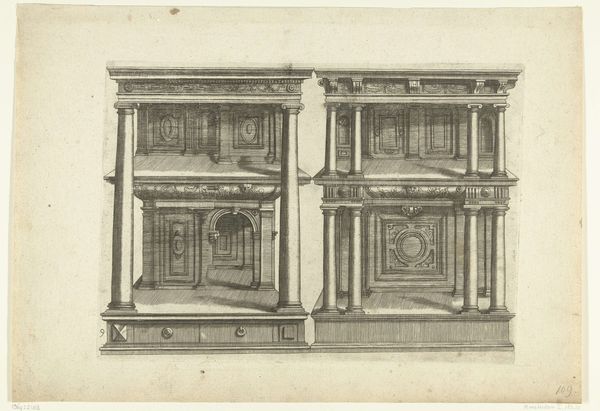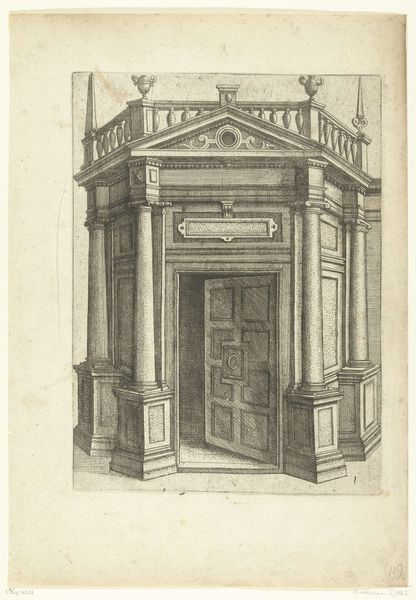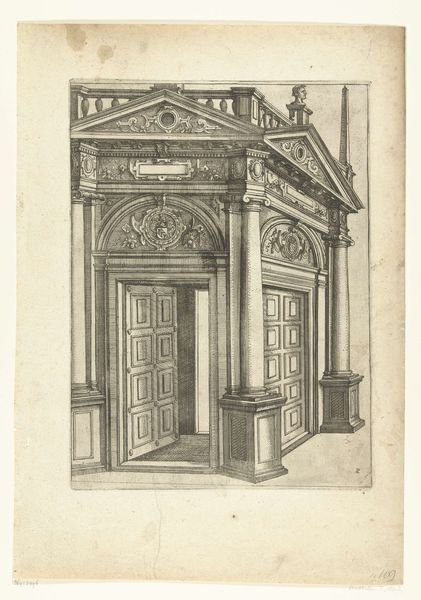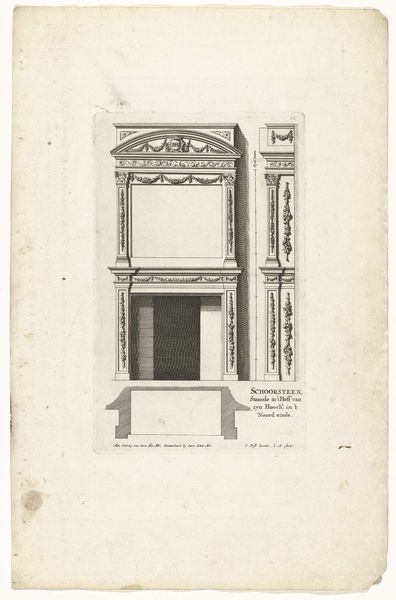
drawing, print, etching, paper, engraving, architecture
#
drawing
#
baroque
# print
#
etching
#
etching
#
paper
#
geometric
#
engraving
#
architecture
Dimensions: height 328 mm, width 233 mm
Copyright: Rijks Museum: Open Domain
Editor: This etching from 1631, "Twee poorten op de Herengracht te Amsterdam," presents two architectural designs of gateways by an anonymous artist. The crisp lines and stark presentation give it an almost blueprint-like quality. What visual symbols stand out to you in this piece? Curator: Immediately, I see the influence of classical motifs, reworked and repurposed in this baroque architectural fantasy. Consider the arches themselves: the arch is a powerful symbol of transition, passage, and even triumph, dating back to Roman times. What happens when we look at the specific ornamentation around them? Editor: Well, I notice different motifs, some geometric and others, um, curlicued, almost organic... Curator: Exactly. Notice how the gateway on the left employs triangular pediments and rather severe, squared-off details, which echo a certain kind of authority and order. But then observe the right-hand gateway. The rounded elements suggest fluidity and grace, leading your eye upwards towards that central orb. What cultural associations might that summon in a 17th-century Dutch context? Editor: Maybe a sense of prosperity or even religious harmony? Amsterdam was a real crossroads, right? Curator: Precisely. These aren’t just doors; they are declarations. Gateways are physical and symbolic thresholds; these specific gateways might communicate the aspirational values of the Dutch Golden Age – order alongside a willingness to embrace new ideas. What do you think of that synthesis? Editor: I never would have seen all of that! So it's not just the buildings themselves, but also what they symbolize about the time. Curator: Indeed. Images are powerful conveyors of cultural memory, each motif carrying layers of meaning that echo through time.
Comments
No comments
Be the first to comment and join the conversation on the ultimate creative platform.

